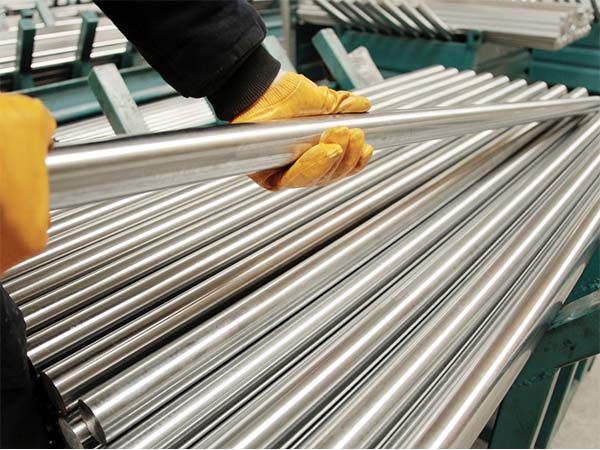Metal pipes are an indispensable part of modern life. They can not only be used in daily life and production, but also in various industrial environments for transporting water, oil, gas and other chemical media. However, metal pipes are not made of just one type of material. There are various types of pipe materials, and each material has different characteristics and properties. This article will discuss the differences between stainless steel pipes and copper pipes.
Stainless steel pipe: It is a round or special-shaped pipe made by cold drawing or hot rolling of steel with chromium (Cr) ≥10.5%, usually containing alloying elements such as nickel (Ni) and molybdenum (Mo). After polishing or acid washing treatment, its surface can form a dense passivation film, which has good corrosion resistance and mechanical strength. Common grades include 304, 316, 316L, etc. Different grades are suitable for different corrosive working conditions.

Copper tubes: Tubes made from pure copper (99.9% Cu) or copper alloys containing small amounts of zinc, tin and other elements through hot rolling, cold drawing and other processes. They can be classified into K, L and M types according to wall thickness and application. Copper tubes have excellent thermal conductivity and ductility, are easy to bend and connect, and have good corrosion resistance to most water qualities and refrigerants at room temperature.
Material properties:
Stainless steel pipes are usually of the 304 or 316 series. Their main alloying elements are chromium and nickel. They have a silver-gray metallic luster and possess high tensile strength and impact resistance. However, due to the material's inherent hardness, special cutting and welding tools are required during processing, and its ductility is slightly inferior to that of copper tubes.
Copper tubes are made of pure copper or copper alloys, presenting a red copper color. They have excellent ductility and are easy to bend and shape. During processing, they can be quickly completed through traditional techniques such as soft welding, flaring or bending.
Corrosion resistance:
In general water supply and HVAC systems, both have good corrosion resistance. However, if the conveyed medium is in an environment with acids, alkalis or high concentrations of chloride ions, stainless steel (especially 316 stainless steel) will hardly experience pitting or pitting corrosion due to the more stable passivation film it forms. In contrast, copper pipes tend to release a small amount of copper ions under acidic or hard water conditions, and long-term use may lead to pitting or even leakage.
Hygiene and Environmental Protection
In the drinking water system, stainless steel pipes do not release any harmful substances into the water, and the material meets the hygienic grade requirements of European, American and national standards. Copper tubes may release trace amounts of copper ions under specific water qualities (such as low pH), and in some areas, there are strict limits on copper content. Both can be recycled and reused, but the stainless steel recycling system is more complete, and the recycling rate and regeneration cost are relatively lower.
Cost comparison
In terms of the unit price of materials, stainless steel pipes are significantly higher than copper pipes. With the addition of dedicated installation tools and construction hours, the initial investment is relatively large. However, considering the benefits of almost maintenance-free operation and long service life in the later stage, stainless steel pipes have a higher cost performance in high-end projects or corrosive working conditions. The material and construction costs of copper tubes are moderate, but due to the significant fluctuations in copper prices influenced by the international market, the overall cost has a certain degree of uncertainty.
Installation and maintenance
Due to the differences in hardness and thickness, the cutting, welding or crimping connection of stainless steel pipes usually requires the use of hydraulic or pneumatic tools, and the on-site construction investment is relatively large. Copper pipe installation can be done using conventional hand welding or an electric soldering iron. There are a wide variety of elbow fittings available, and the processing is convenient. In terms of later maintenance, stainless steel pipes, due to their excellent corrosion resistance, almost do not require replacement or repair. If copper tubes encounter changes in water quality, corrosion or mechanical damage, they may need to be inspected regularly and some sections replaced.
Copper cannot be used for the following purposes:
Diesel pipeline. Copper pipes may cause fuel to polymerize (thicken).
High-pressure system (limited by the pressure rating of the copper tube, it drops sharply with the increase of size)
High-speed systems, as the corrosion rate will increase significantly with the increase of flow rate. The corrosion rate of copper tubes with a flow rate of 2 meters per second is three times that of stainless steel, and the corrosion rate of copper tubes with a flow rate of 6 meters per second is 20 times that of stainless steel.
Stainless steel and copper each have their advantages and disadvantages. Furthermore, in a very small number of applications, stainless steel can be used in all situations where copper is used, as well as in many situations where copper cannot be used. Stainless steel can provide durable and high-quality solutions, featuring better corrosion resistance, strength and ease of installation.
Read more: Stainless steel pipe supplier
